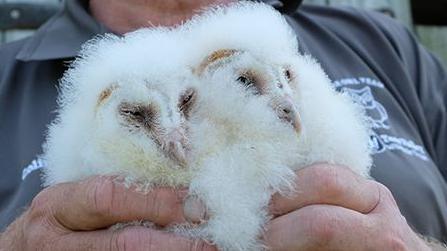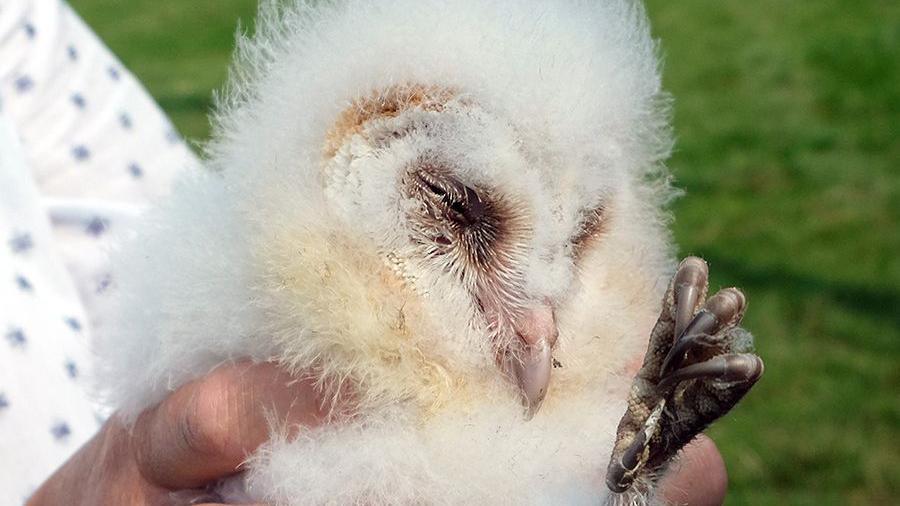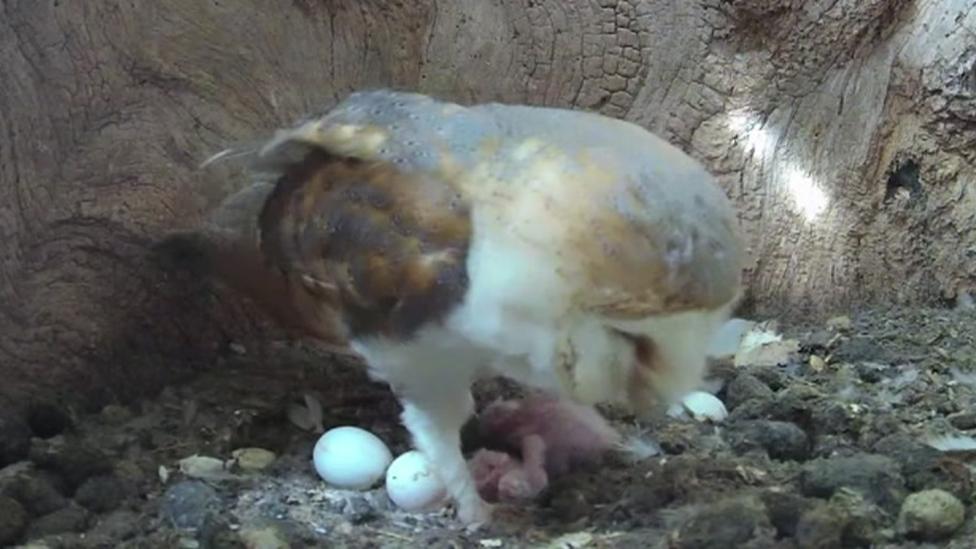First barn owl chicks hatch in conservation scheme

The chicks should be ready to take flight later this month
- Published
The first chicks have hatched as part of a project to boost barn owl numbers in North Yorkshire.
More than 50 specially-designed nesting boxes have been installed across the Howardian Hills National Landscape in a link-up with farmers and land managers.
Conservationists from the Howardian Hills Partnership checked the boxes in July and found barn owls had already started to move in, with some also producing eggs.
Experts said the two female and one male chicks, which have been tagged, are healthy and should take their first flight by the end of August.
The birds of prey traditionally nest in tree hollows or in old farm buildings, but these habitats have declined significantly, according to the project's volunteers.
The Howardian Hills National Landscape area covers 70 square miles (204 sq km) of the North Yorkshire countryside, including the North York Moors National Park, the Yorkshire Wolds and the Vale of York.

Experts say they are "overjoyed" to already have chicks in the boxes
Nick Burrows, from the Howardian Hills National Landscape, said: “We were expecting to have to be patient as owls need time to find the boxes and establish themselves.
"We are overjoyed that we already have chicks, despite the exceptionally wet weather for much of the year."
Mr Burrows, a farm conservation officer, continued: "Providing owl boxes is just one side of the conservation coin - getting the habitat right so it produces plenty of food for this and other species is vital.
“We are doing a lot of work in the Howardian Hills to encourage land managers to leave field margins and verges uncut, as they provide ideal havens for small mammals."
According to the project, 80% of the UK’s barn owl population are now thought to be using artificial nests.
Colin Gibson, part of the team installing nesting boxes, said: “We often hear about nature struggling, but barn owl numbers have actually increased compared with 20 years ago - that’s in large part due to providing ready-made nests."
Despite the positive news, he warned there was "no room for complacency" and said the project had made a "big difference".
The chicks are expected to stay very close to the site, with conservationists hoping they will breed in their first year and find a home in other nearby boxes.
Listen to highlights from North Yorkshire on BBC Sounds, catch up with the latest episode of Look North or tell us a story you think we should be covering here, external.
Related topics
Related stories
- Published17 June 2022
